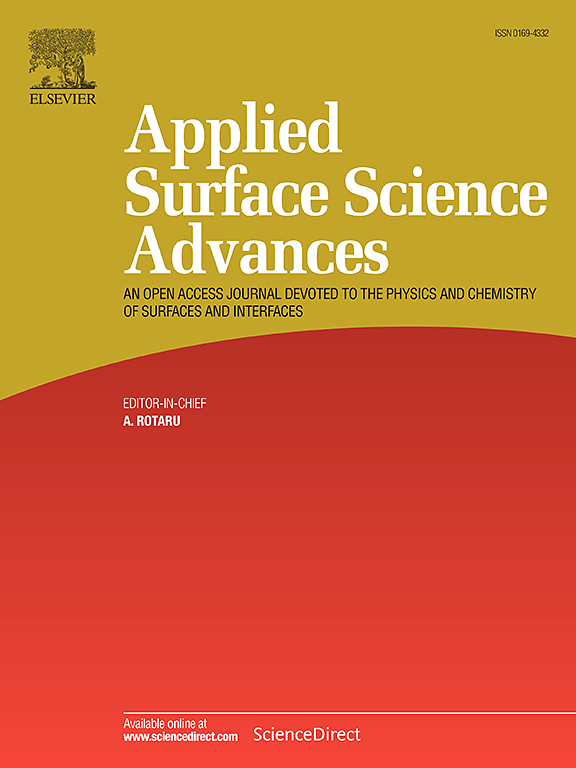Highly thermostable and visibly transparent Cu-thin-film planar heaters
IF 7.5
Q1 CHEMISTRY, PHYSICAL
引用次数: 0
Abstract
Transparent heaters (THs) are widely used in applications such as deicing, defogging, and thermal management, requiring high transparency, low sheet resistance and structural durability. This study investigates the design, fabrication, and performance of ZnO/Cu/SiO₂ (ZCS) THs, with a particular focus on thermostability. By employing a dielectric/metal/dielectric configuration with Cu as the metallic layer, ZCS heaters offer a cost-effective alternative to indium tin oxide and Ag-based THs. The optimized ZCS structure, comprising ZnO (20 nm)/Cu (6 nm)/SiO₂ (80 nm), demonstrates exceptional performance, achieving high visible transparency (maximum of 94.8 % and average of 86.3 %), low sheet resistance (∼10 Ω/sq or less), and rapid thermal response. The heaters exhibit excellent stability during prolonged operation and repeated on-off cycling at elevated temperatures of ∼200 °C due to the planar structure of heating element. This remarkable thermostability far exceeds that of THs consisting of network-structured Cu nanowires, which fail at temperatures below 90 °C. Under bias voltage sweeping, the ZCS TH with an 8-nm-thick Cu layer undergoes gradual and irreversible structural degradation, beginning with localized void formation and progressing to full-scale solid-state dewetting and agglomeration of Cu layer, ultimately failing at ∼ 330 °C. These findings establish ZCS heaters as versatile and cost-efficient alternatives for high-performance transparent heating in demanding environments and present a pathway for further structural enhancement.
高耐热性和明显透明的铜薄膜平面加热器
透明加热器(THs)广泛应用于除冰,除雾和热管理等应用,要求高透明度,低片材阻力和结构耐久性。本研究探讨了ZnO/Cu/SiO₂(ZCS) THs的设计、制造和性能,特别关注热稳定性。通过采用以Cu为金属层的电介质/金属/电介质结构,ZCS加热器提供了一种具有成本效益的替代氧化铟锡和银基THs的方法。优化后的ZCS结构由ZnO (20 nm)/Cu (6 nm)/SiO₂(80 nm)组成,具有优异的性能,具有高可见透明度(最高为94.8%,平均为86.3%),低片电阻(~ 10 Ω/sq或更低)和快速热响应。由于加热元件的平面结构,该加热器在长时间运行和在~ 200°C高温下的反复开关循环中表现出优异的稳定性。这种显著的热稳定性远远超过了由网状结构的铜纳米线组成的这种材料,后者在低于90°C的温度下就会失效。在偏置电压扫描下,具有8 nm厚Cu层的ZCS TH经历了逐渐且不可逆的结构降解,从局部空洞形成开始,发展到Cu层的全面固态脱湿和团聚,最终在~ 330°C时失效。这些发现确立了ZCS加热器作为苛刻环境中高性能透明加热的多功能和经济高效的替代品,并为进一步加强结构提供了途径。
本文章由计算机程序翻译,如有差异,请以英文原文为准。
求助全文
约1分钟内获得全文
求助全文

 求助内容:
求助内容: 应助结果提醒方式:
应助结果提醒方式:


